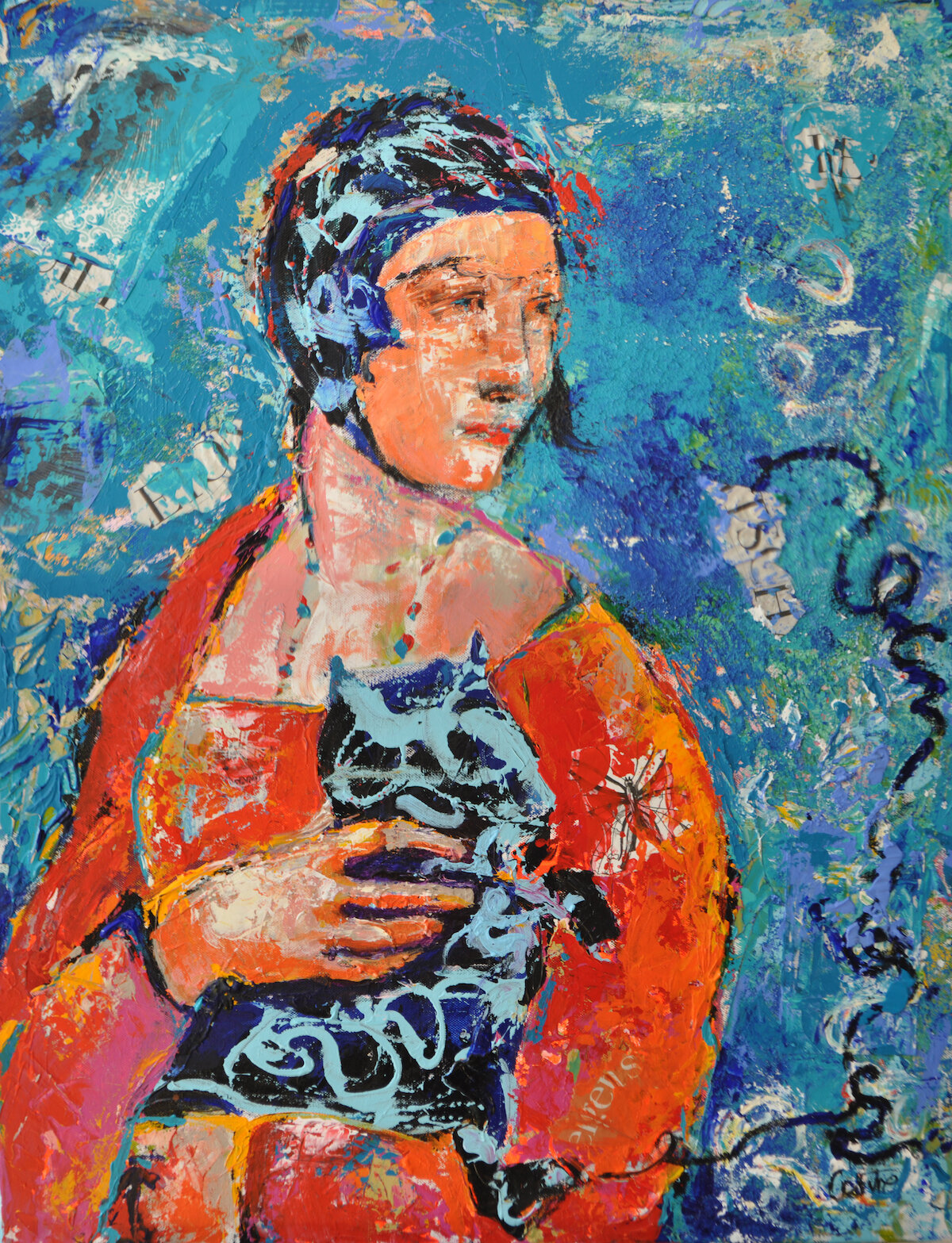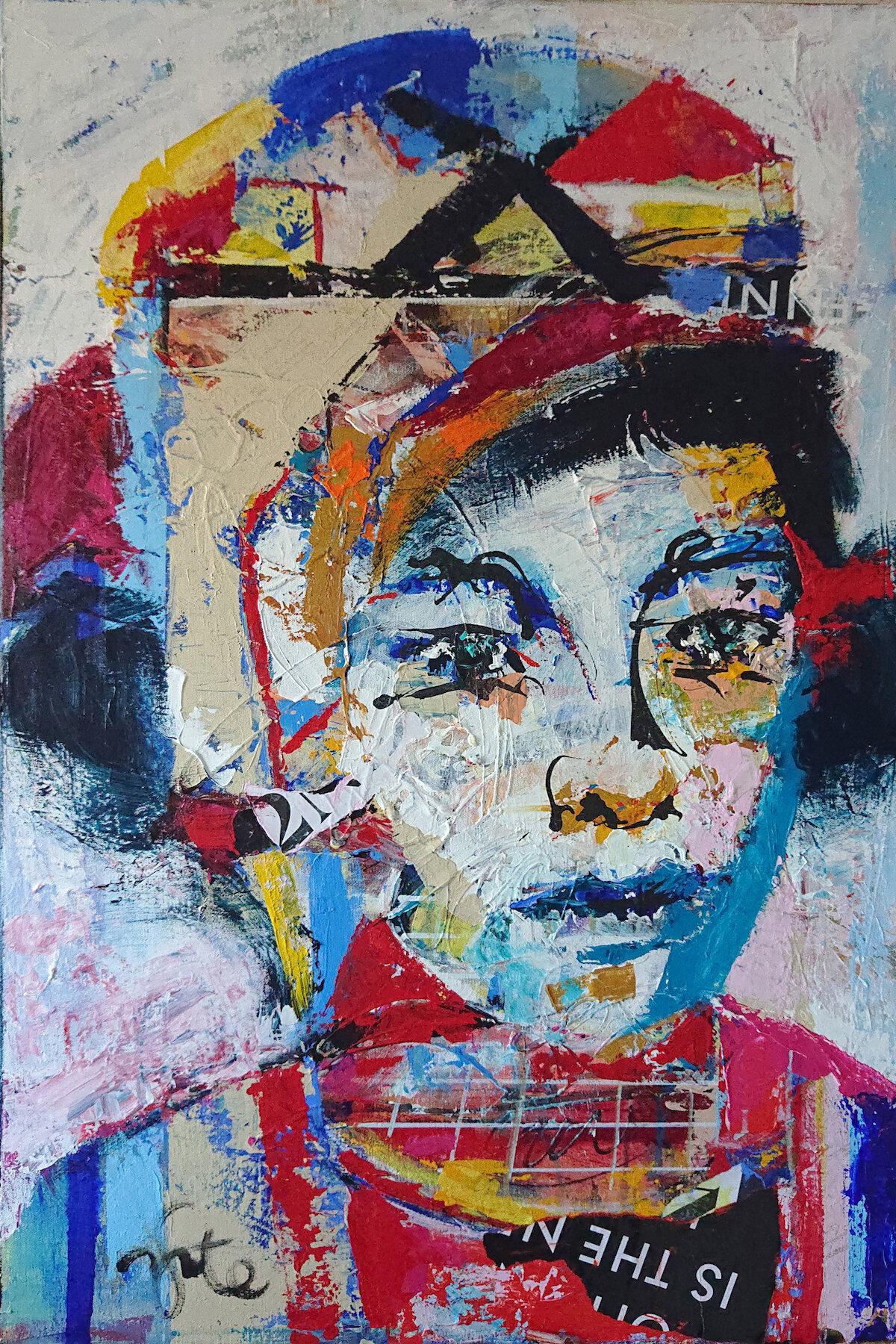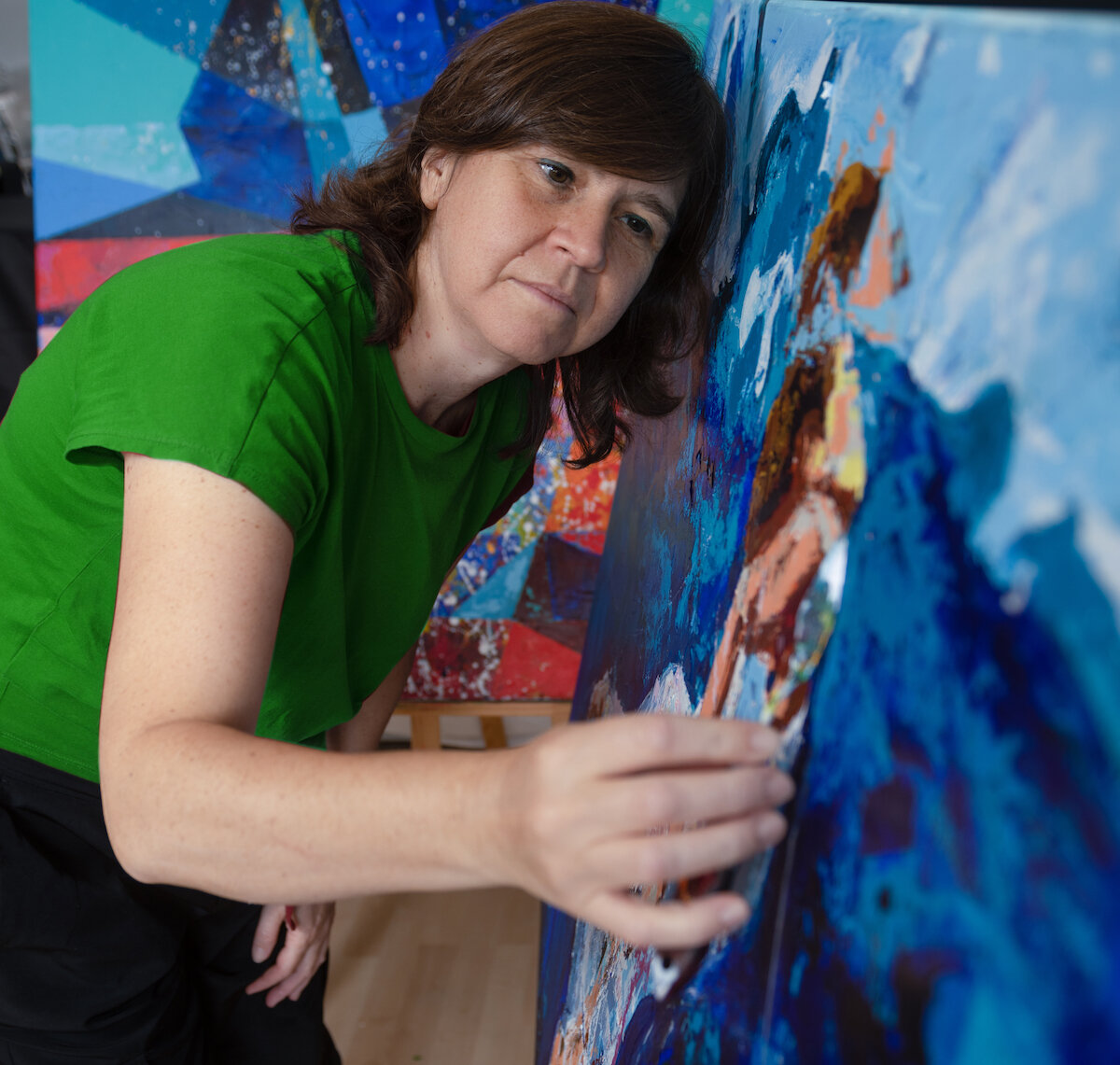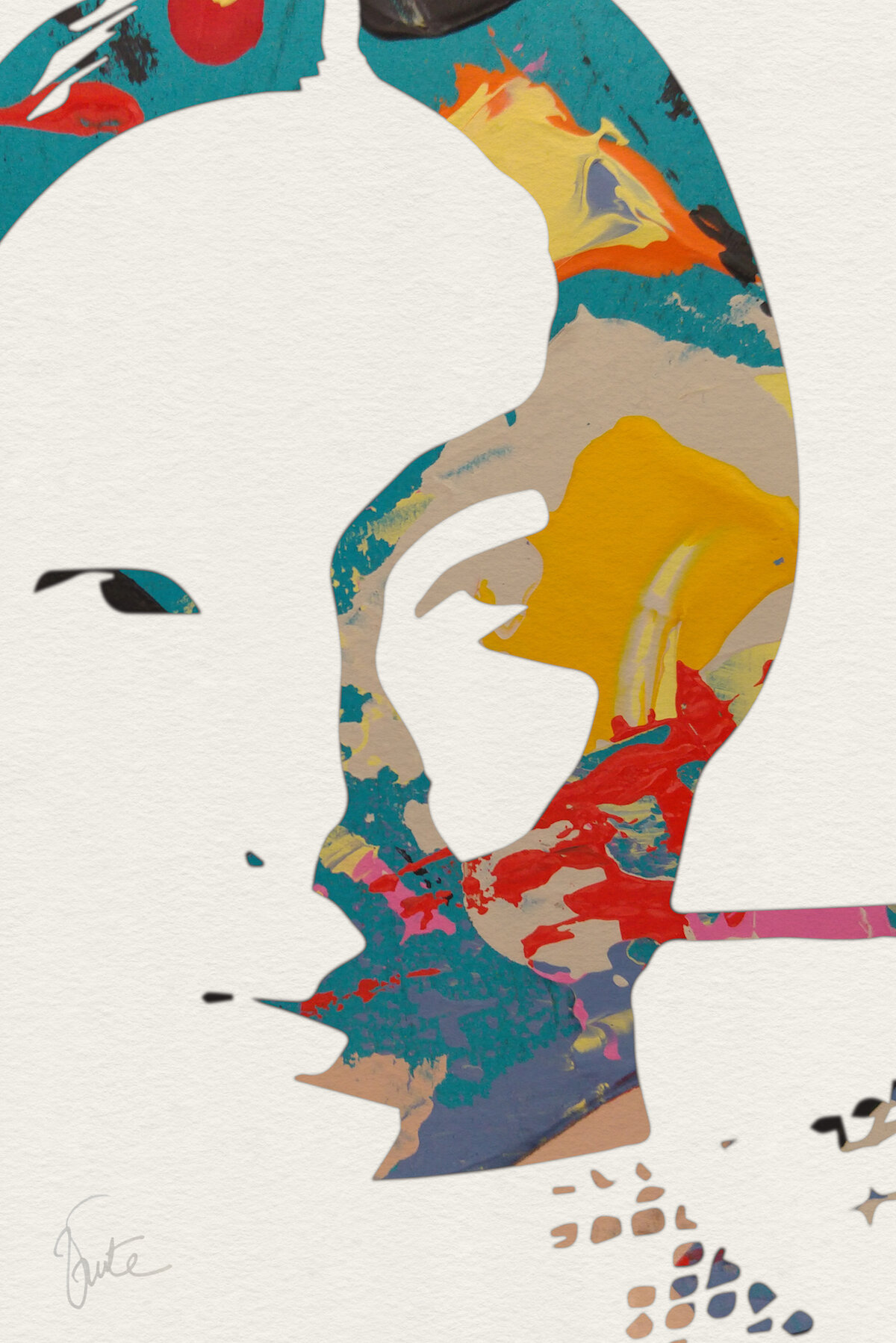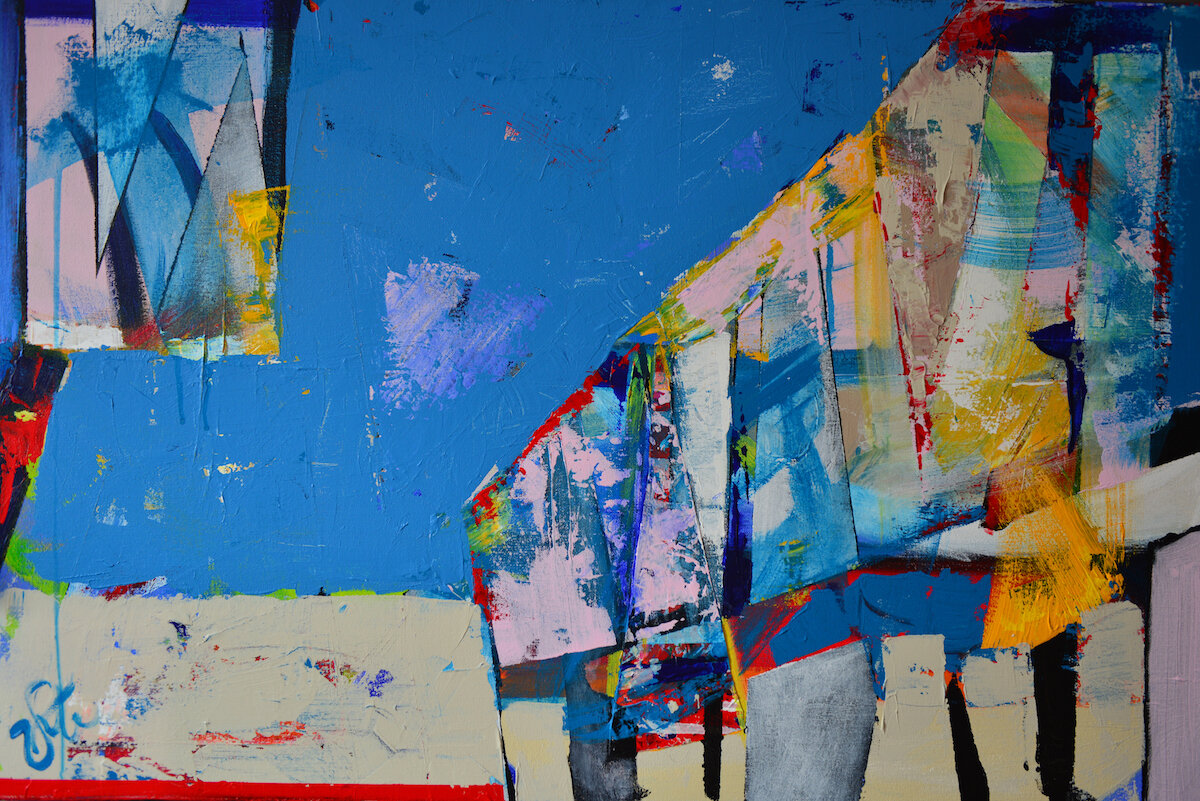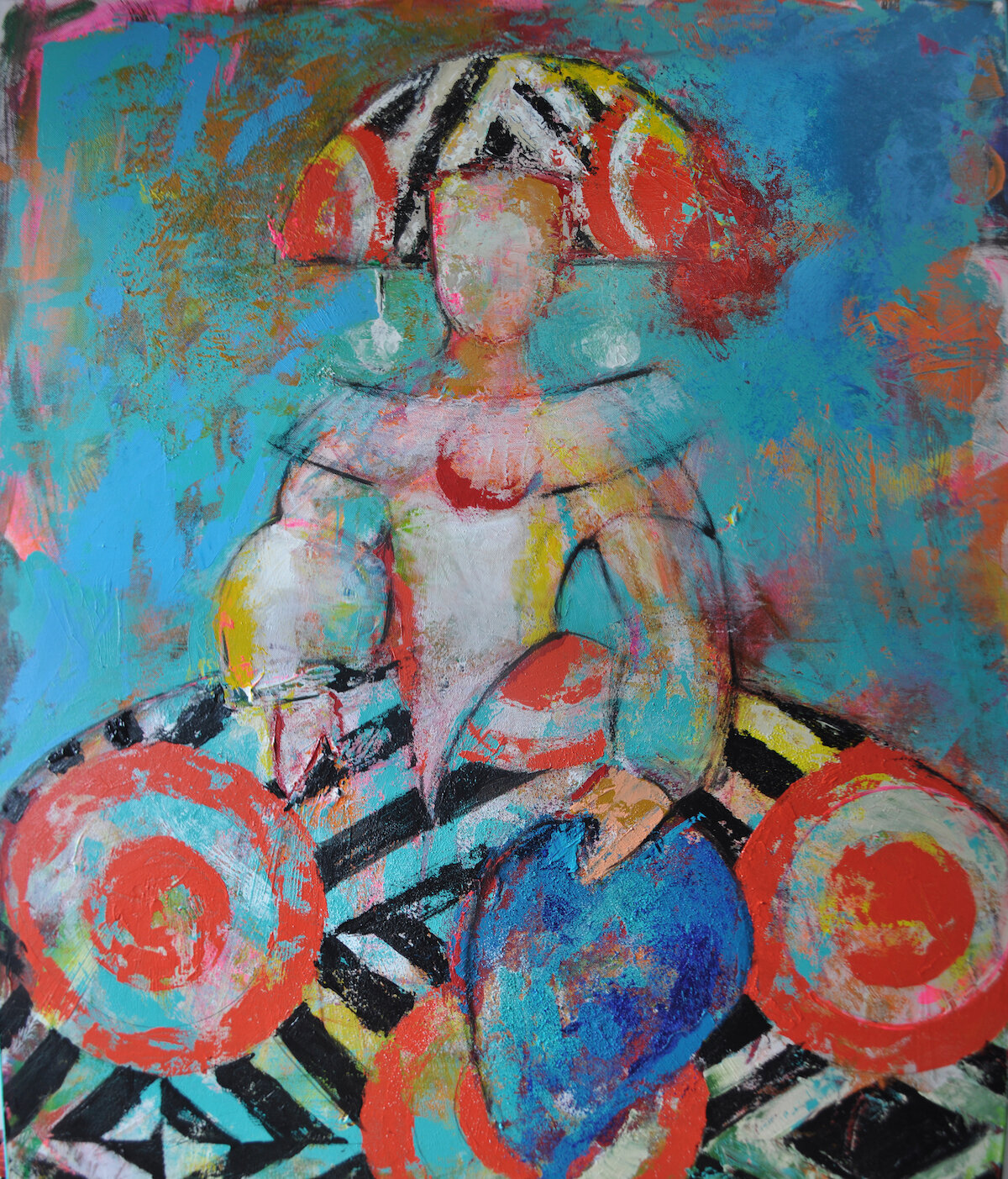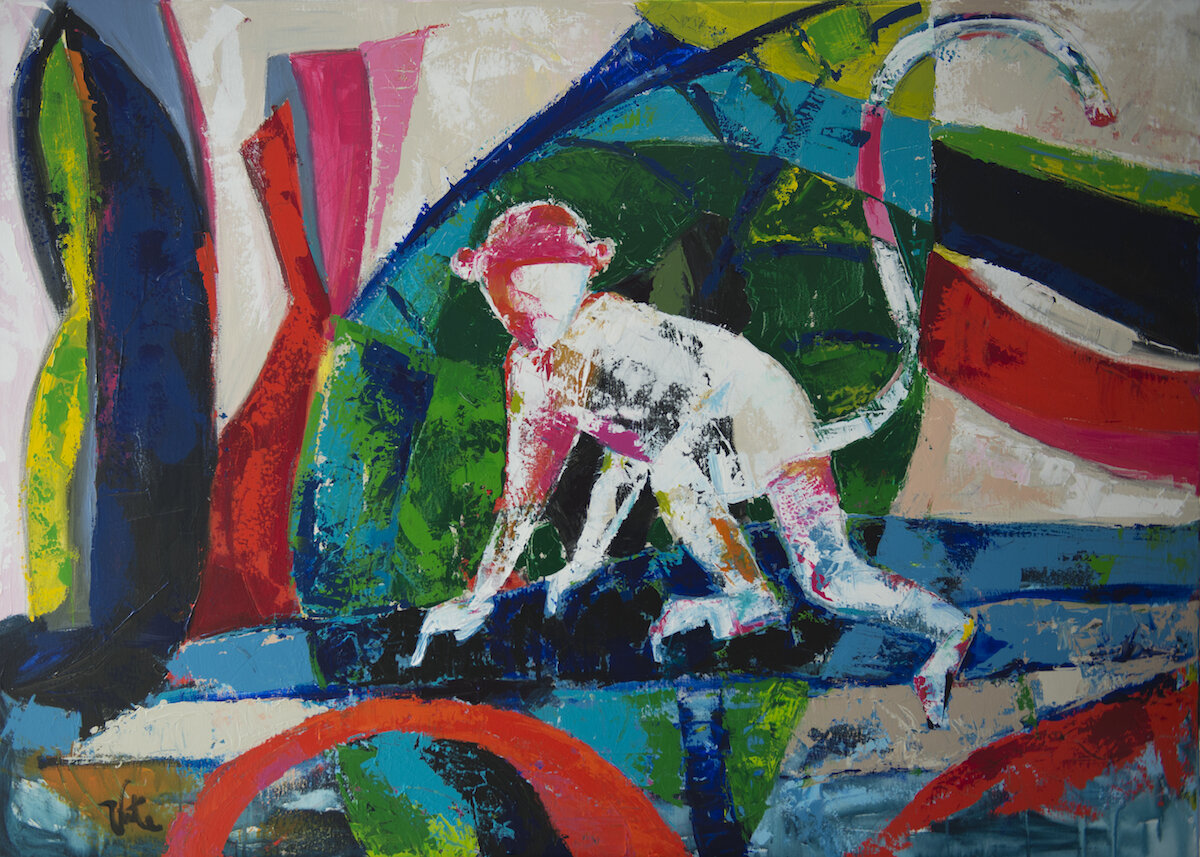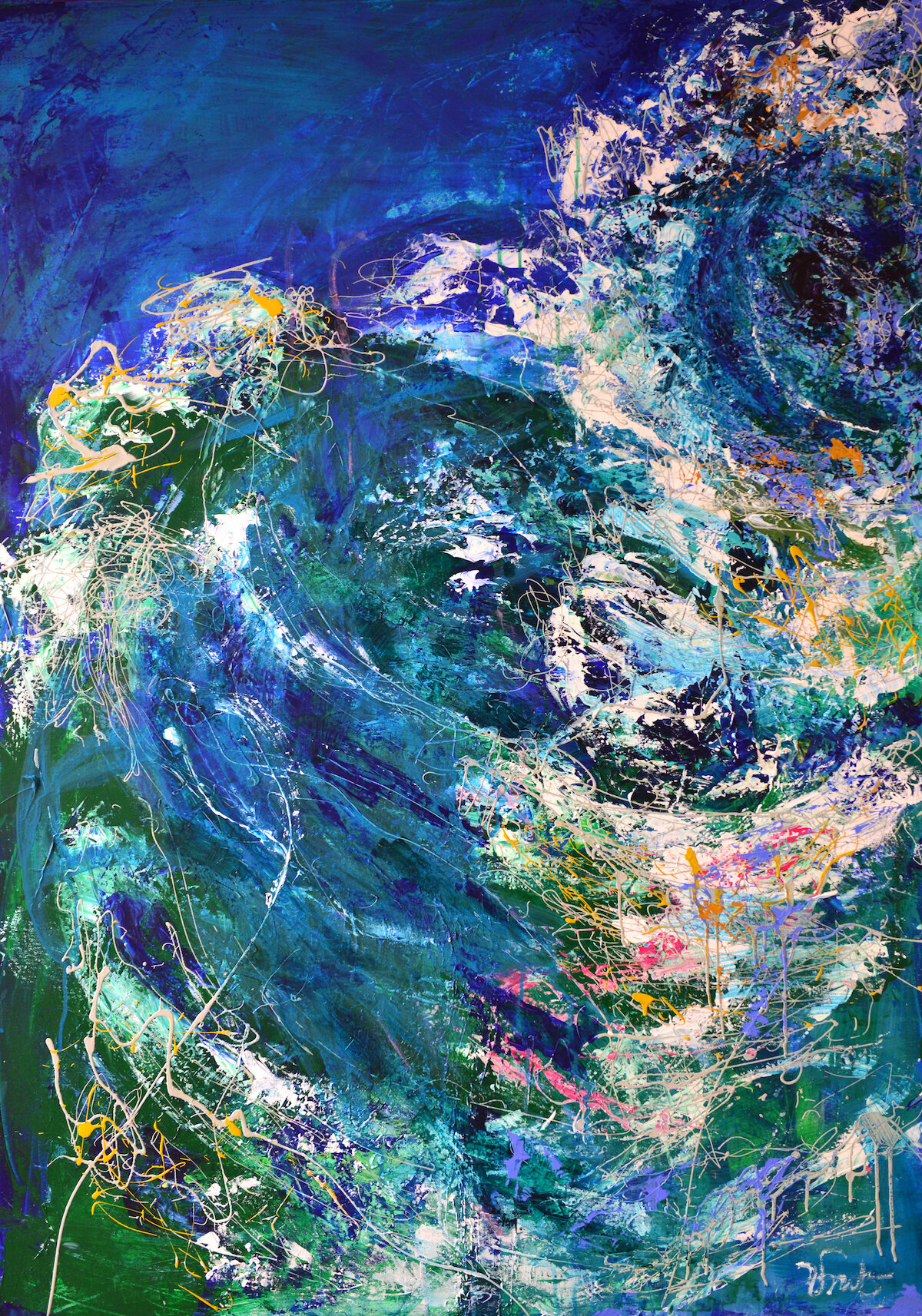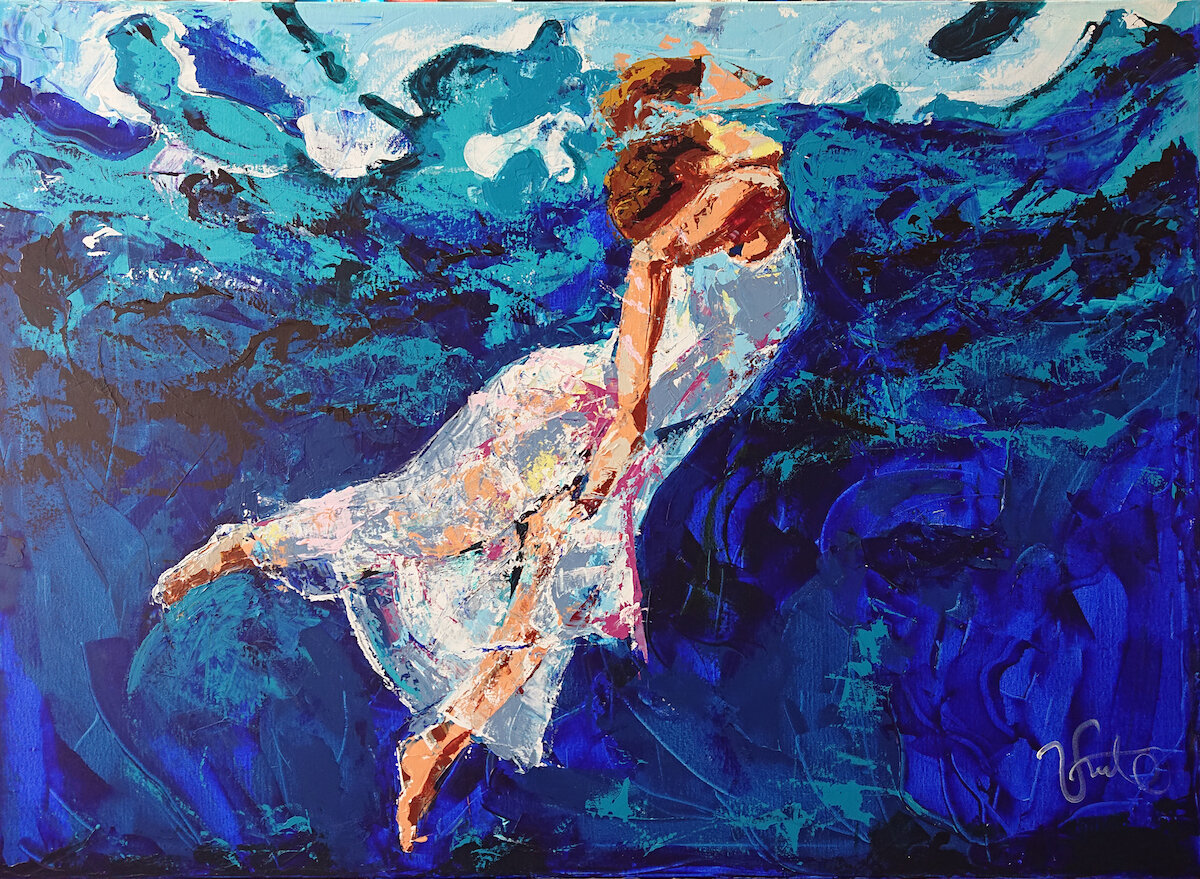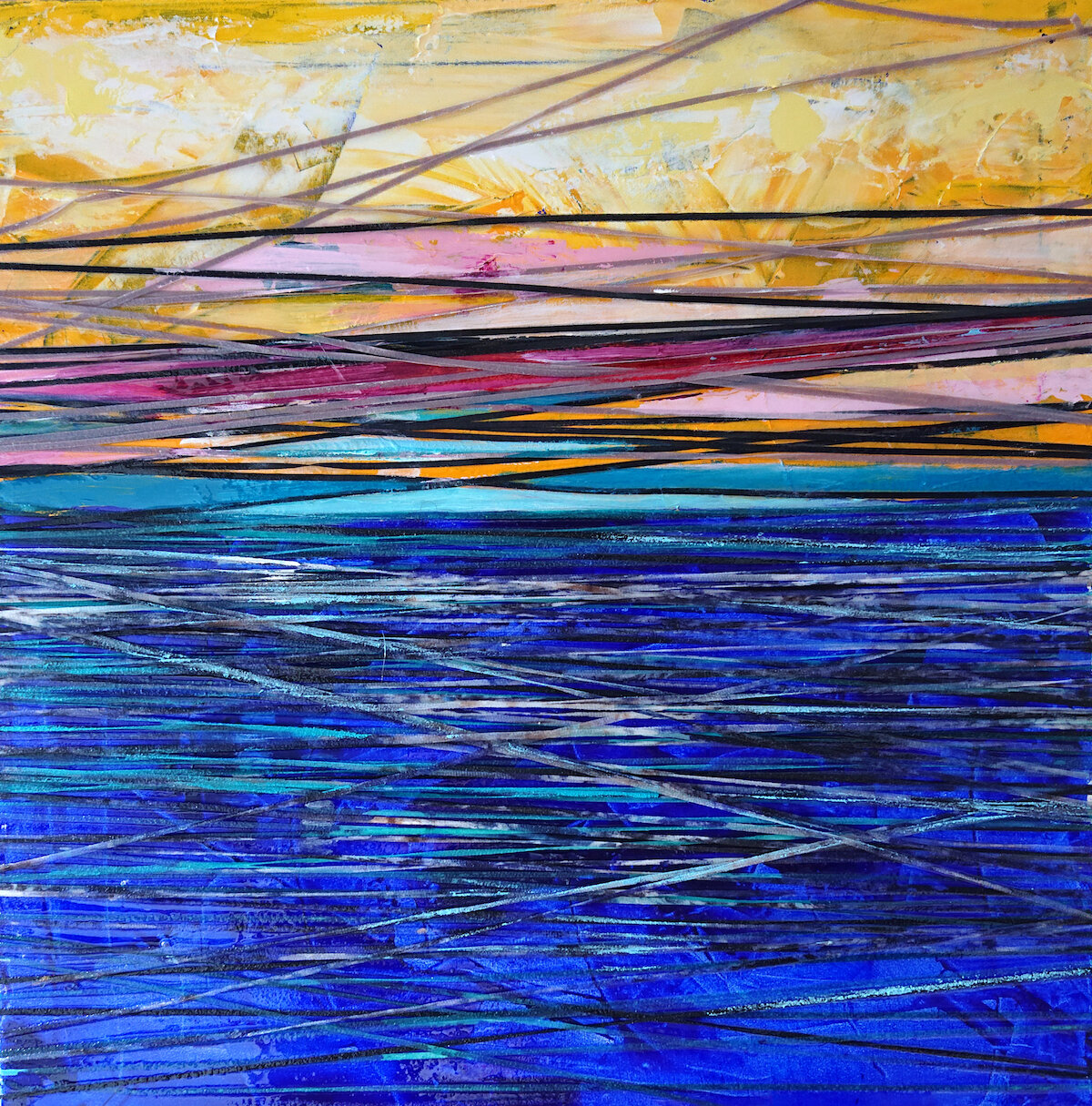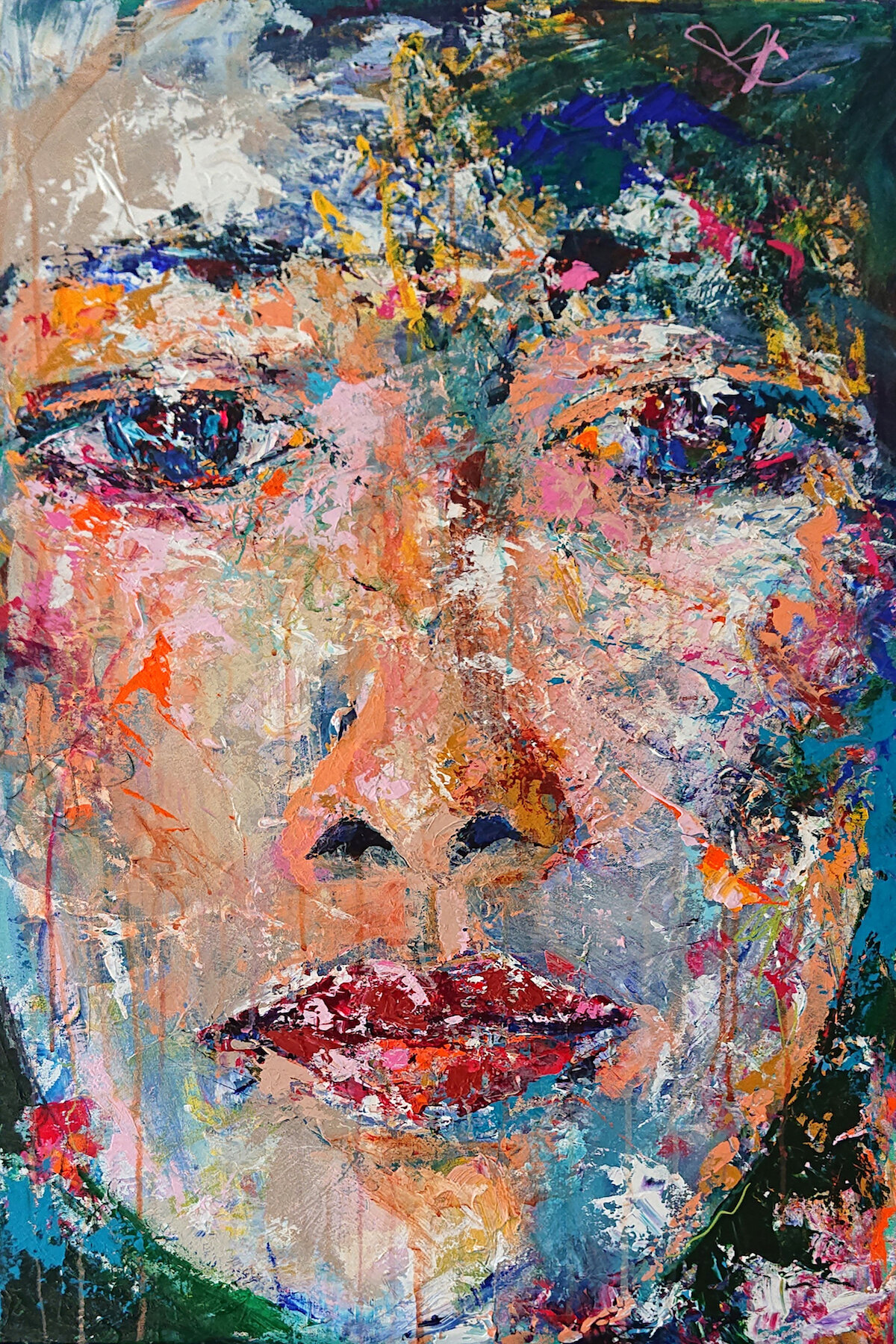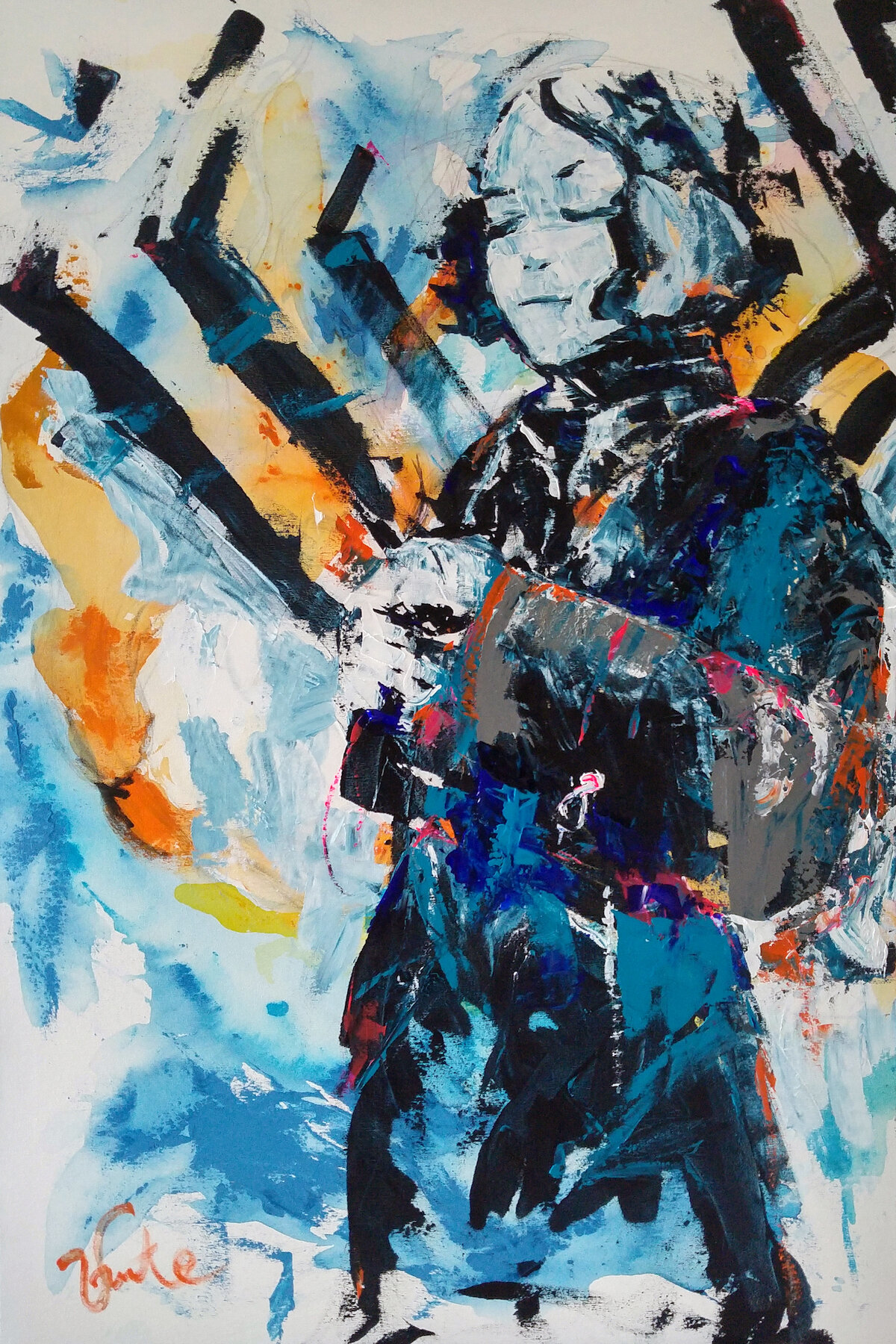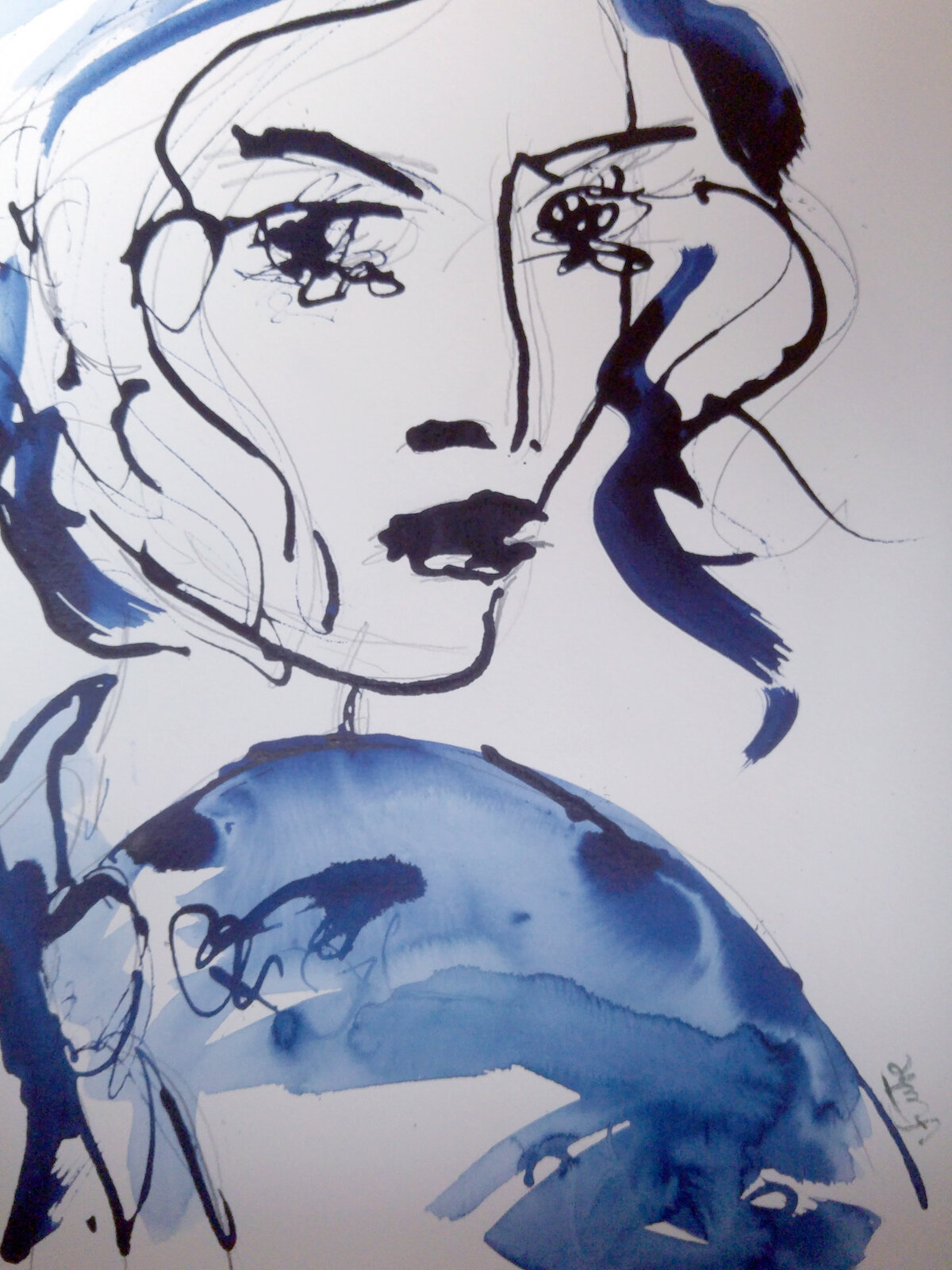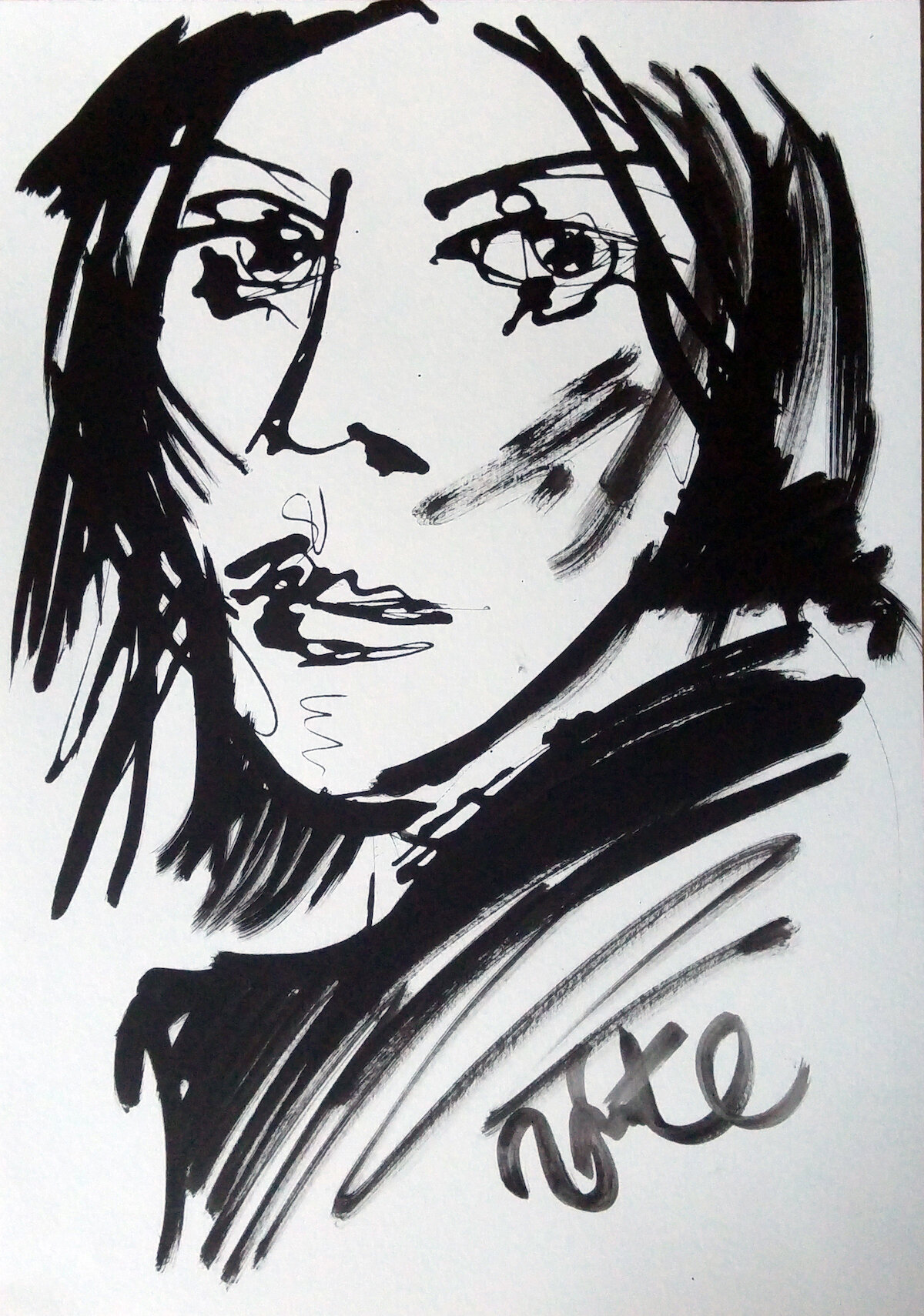Interview with Begoña Lafuente
Begoña Lafuente lives and works as an artist near the Northern sea in The Netherlands. Born, raised and educated in Spain - She moved to Alkmaar, North Holland, in 2009 with her husband and two daughters. Her career began after graduating from The Fine Art University in Madrid in 1992, after which she became a graphic designer and illustrator for multiple corporal identity, branding, and technology companies. Nowadays she is a multidisciplinary artist who enjoys the process of experimenting with media and different techniques ( photography, scannographies, monoprints). Her most predominant field is, however, painting, where her acrylics and inks often involve collages.
She has currently been very involved in creating monoprints, which allow her to investigate and apply her professional background as an artist and designer. The beauty of this process lies on its spontaneity when combining digital, printmaking, painting, collage and drawing techniques. Her choices involve daily matters, but you will also find that her Portfolio is inspired by the recognizable shapes of history’s art masterminds.
Her art, therefore, expresses how easily she adapts between artistic styles (abstract, urban life, portraits, nature). She, moreover, creates an emotional and visual tension through the use of “Themed Contrast”, “Opposite Colour-Balance”, and “Biological vs Geometric Shapes”; themes that represent a constantly shifting nature.She often participates in local and international art fairs and exhibitions and her works can be found in private collections across Europe (France, Germany, The Netherlands, Spain, United Kingdom), and in The United States of America.
Could you please introduce yourself and tell us how you started in the arts? and your first experience in art-making?
My name is Begoña, Bego for short. I am a Spanish artist living in the Netherlands, and I started in the arts quite a long time ago. My career began after graduating from the fine art university in Madrid in 1992, after which i became a graphic designer and illustrator for multiple corporal identity, branding, and technology companies. I took a bit of a professional shift when I moved to the Netherlands in 2009, since I became a freelance artist; exhibiting in worldwide cities such as Amsterdam, Hamburg, and Paris. However, it wasn’t until I moved to the Netherlands that I started working full time as a painter, which is also my passion. There has been quite a big change in my working style throughout the years. From working with users' demands in graphic design and a few paintings, to becoming a full time painter by my own initiative. Becoming a full time painter requires serious commitment and discipline, but also has an explorative fun side to it.
How would you describe yourself and your artwork?
I am a multidisciplinary experimental artist; my process involves using different techniques and media that I always like to come back to. For example, sometimes I decide to combine paint and photography, and other times I work with scannographies, collages and monoprints. In either case, I like to fuse “a perception of reality” with abstract artistic components. My style invites you to draw your own interpretations of what exactly it is you’re observing in the artwork.
Where do you get your inspiration from?
I am a big fan of design, architecture, fashion, street art, and abstract painting, but this inspiration traces back to the work of art masterminds to the works of Velazquez, Vermeer, da Vinci. ; how their portrait’s eyes follow you through the room.
What emotions do you hope the viewers experience when looking at your art?
I often question why some artworks are timeless, live through the centuries, and why others just fall into oblivion. I think art should be a timeless conversation between the observer and the artwork., where both have a surrealistic conversation where words are left to interpretation. This interaction creates the hypertension that makes an artwork distinguishable amongst others. this is what i try to achieve through my art. I try to reveal little information of what an artwork represents to leave the final decision to the observer. The beholder becomes the final composer of the artwork through the simple act of observing and interpreting my art.
When do you know that an artwork is finished?
I thoroughly enjoy the process of creating, taking my time to fine-tune colours and shapes. Observing how character dynamics and contrasts challenge each other in a painting. I was taught an artwork is complete when you have already squeezed all of its essence, and have nothing else to say about it. However, I think this doesn’t apply to my work. In contrast, i think an artwork is finished when i have obtained a reaction from my audience. I may be done communicating what it means to me, but my audience might not be done interpreting what it means to them. Only when both sides have expressed this, I think the cycle of creation is complete. Art becomes “empty” if there is not someone else to see it.
What has been the most exciting moment in your art career so far?
I have had two really exciting moments in my career...
The first was when I passed the art exam and got accepted in university. i had never attended an art academy to prepare for the art exam, nor even drew on anything bigger than an A4 without a pencil, so there I was at the exam, with an a1 format drawing and a limbless greek sculpture in front of me.. and it turns out i did great! i felt quite like the wonder-woman for it.
The second moment occurred when facing a white canvas after my 20-year graphic design career. I sold that first painting straight away. That was really something too! I still cringe at the memory of getting quite emotional in front of the buyer.
How long does it take to produce one artwork?
It of course depends on the type of artwork.
I firstly start with daily intensive painting sessions over a week’s duration, and let the work sit in the studio until I ’m ready to face it again. This could be after weeks or even months, after which I complete each artwork with a completely new eye. The same goes for my designs and monoprints, I need some space first to mature ideas. I also enjoy making newer versions of old artworks too. I can get emotionally attached to the artwork result after this long dedicated period of work. But this emotion is also what makes each artwork a small piece of artistic soul I hand out to my clients.
What exciting projects are you working on right now? Can you share some of the future plans for your artwork?
I am working on a series called “ephemeral”. These are collages’ photographs of gorgeous hand-made paper. These ephemeral series are first photographed and then destroyed to make new compositions. they are a great inspiration to form new pieces of abstract painting.
Moreover, I also started working on a series of paintings inspired by water and air, and the concept of floating and levitating human figures through activities like swimming and dancing.
Do you have any upcoming events or exhibitions we should know about?
I am very excited to be exhibiting my art in Paris from December 7th at Galerie Sonia Monti, they will be representing my work during this upcoming year, 2021. I will also be exhibiting in the first art fair in Amsterdam, from 25 to 28 February, 2021.
Where do you see your art going in five years?
I see my art in continuous evolution, shifting between modern and abstract painting experimentation. Further, I would also enjoy creating 3d art installations that play with the user’s perception. In this way, involving my creativity in larger artistic disciplines.
Website: www.begolafuente.art


